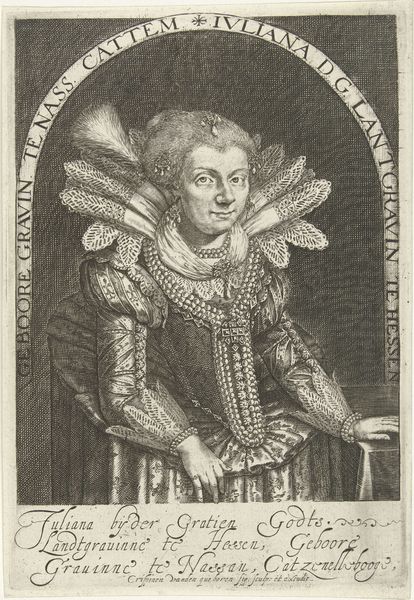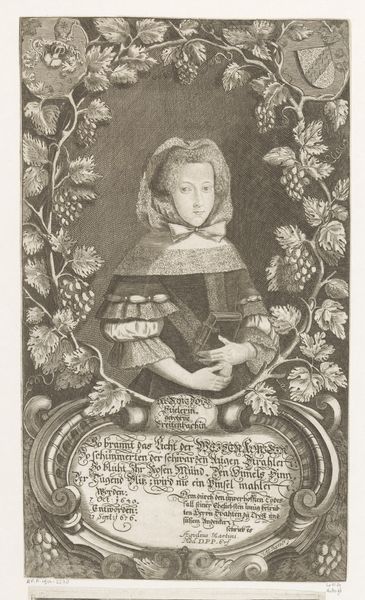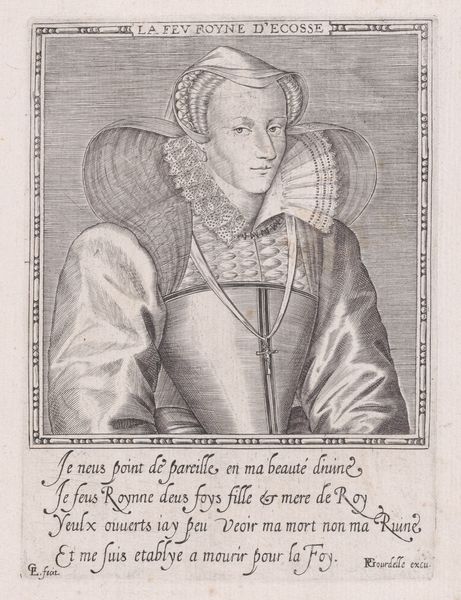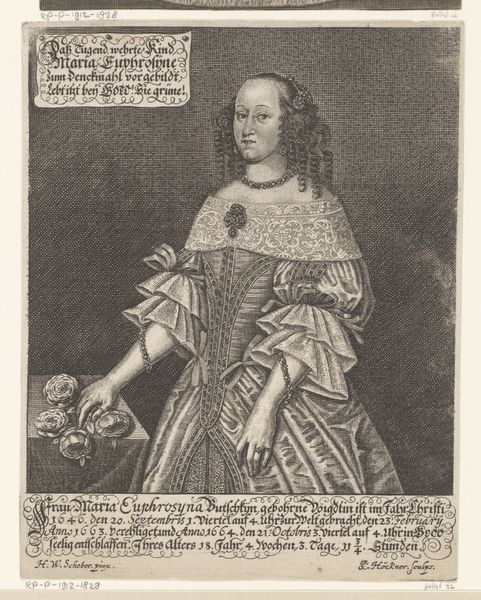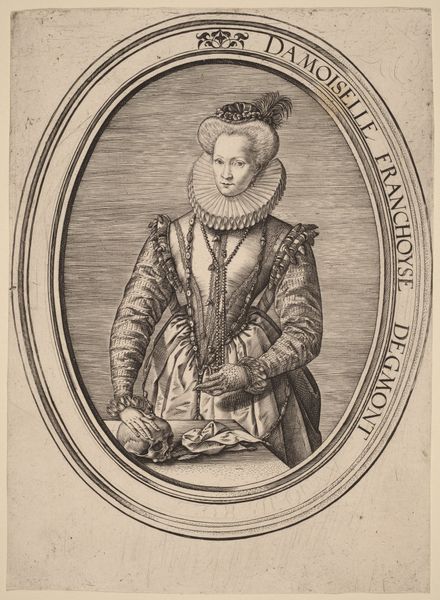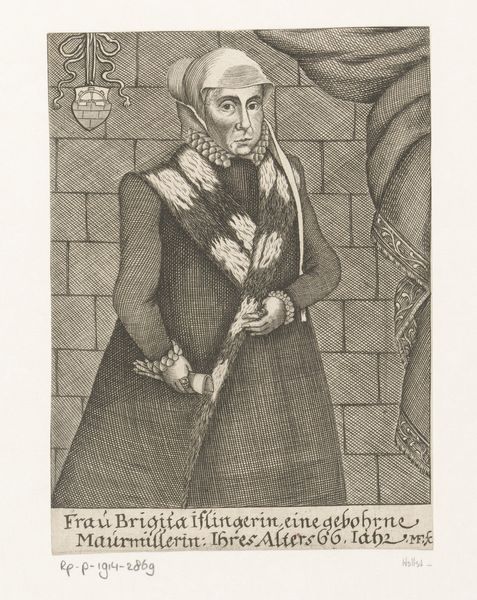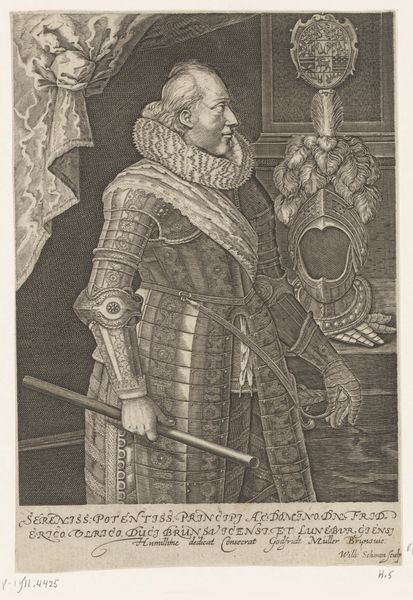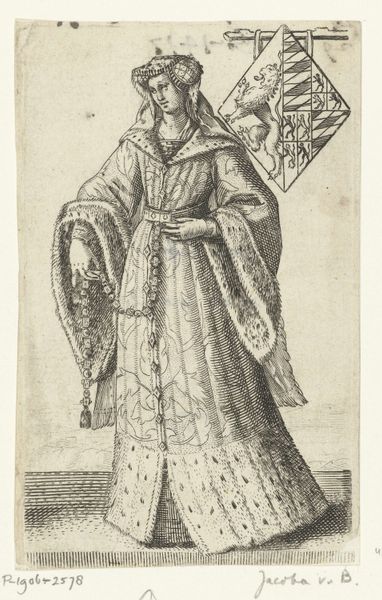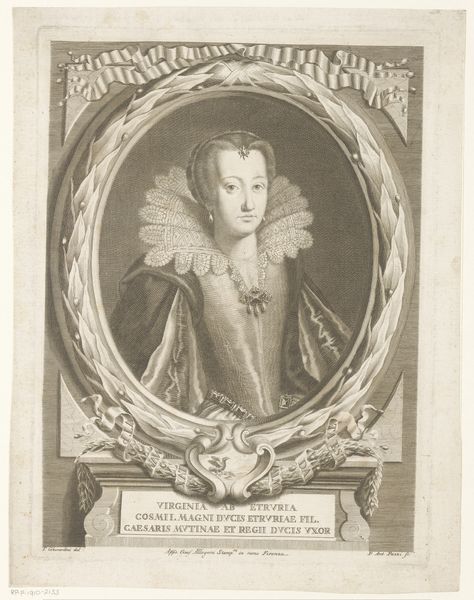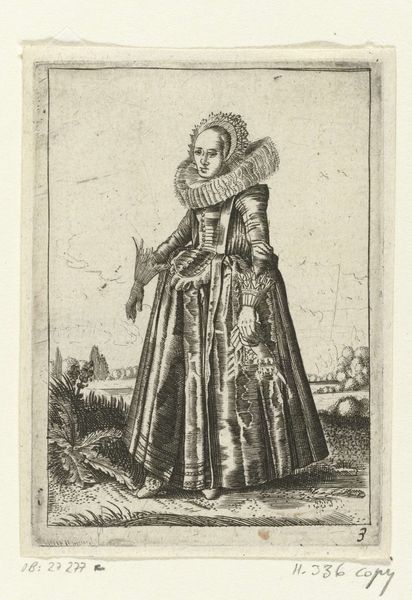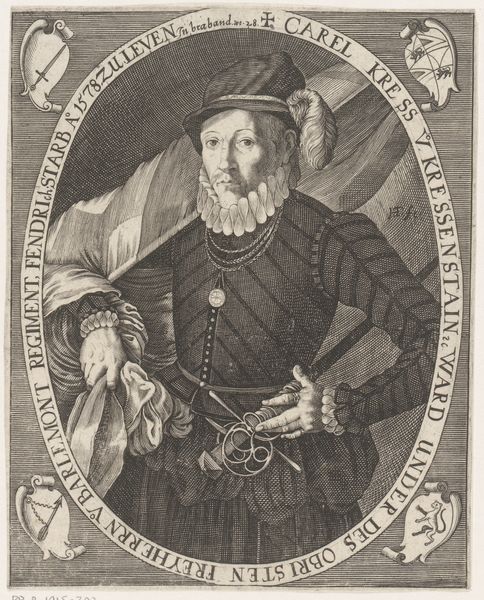
engraving
#
portrait
#
baroque
#
historical photography
#
history-painting
#
engraving
#
realism
Dimensions: height 177 mm, width 119 mm
Copyright: Rijks Museum: Open Domain
Curator: This engraving, completed in 1676 by Michael Fennitzer, offers a portrait of Dorothea Sabina Helffrich. I find it a fascinating example of late Baroque portraiture. What's your initial take on it? Editor: Somber, certainly. The dark tones create a gravity. Yet there’s an interesting interplay between wealth—implied by the fur and lace—and a devotional atmosphere given the little religious depiction in the top left corner. Curator: Exactly! The contrast sets the tone. Note also the inscription beneath her. The engraving bears text imploring for solace in parting and help avoiding corruption, common motifs, but its integration is unusual here. How does this blending of portraiture with religious supplication reflect social norms? Editor: Perhaps this reflects an attempt to immortalize the subject, not only as an individual of status but as a virtuous soul. Portraiture had an increasingly public role in the 17th century. Who got to be portrayed, how they were portrayed, spoke volumes about the social hierarchies of the time. This isn't just Dorothea; it’s Dorothea *approved* by the mores of her era. Curator: I agree, and I see those visual decisions underscored by iconographic ones. Examine her eyes. The artist captures her with soft realism, and they seem directed out and slightly down as if interrupted from prayer. It encourages introspection for the viewer. How does the interplay of realistic rendering with idealized presentation shape our view of Baroque identity? Editor: It's a constructed identity, certainly. The pose is deliberate, calculated to inspire both awe at her station and sympathy for her piety. Consider also the location of the coat of arms in the upper left next to what appears to be a figure and crucifix... it shows a strategic combination of the worldly and the divine. Fennitzer uses light and shadow, engraving and text, to fashion an image deeply invested in propagating particular virtues for a prominent figure. Curator: A powerful comment on the performative nature of status! I believe that even the fur trim of the hat operates on dual registers, demonstrating a worldly fashion sense and also humility by implying the subject does not fear future suffering. Thank you for helping elucidate how the composition and construction offer an argument about the sitter’s legacy and virtue! Editor: My pleasure. The artifice speaks volumes if you listen. This engraving exemplifies the period's skillful use of visual rhetoric in shaping public perception.
Comments
No comments
Be the first to comment and join the conversation on the ultimate creative platform.

